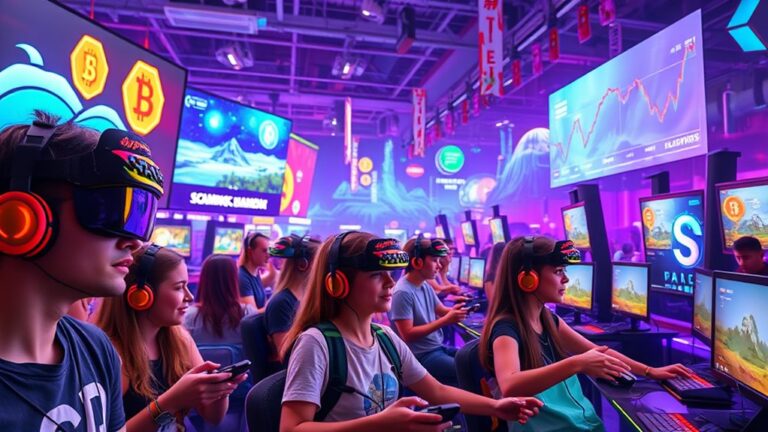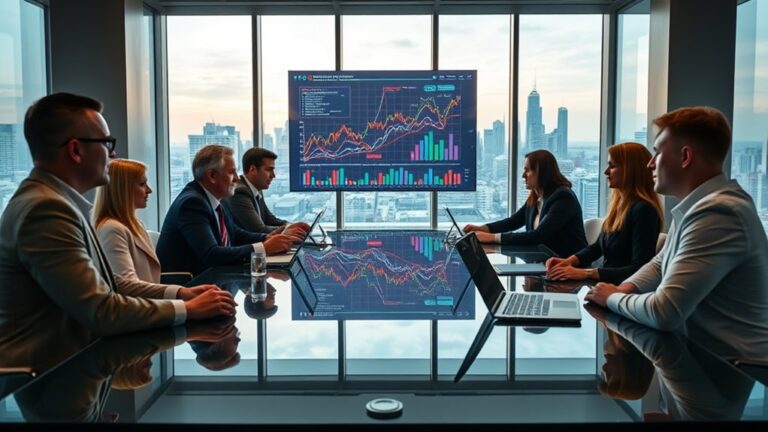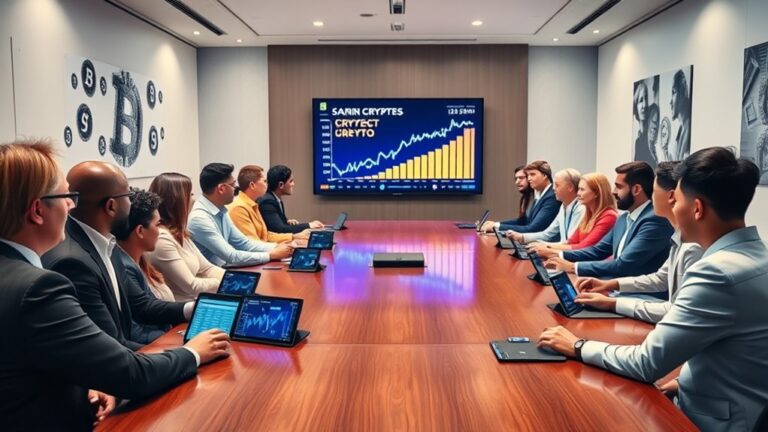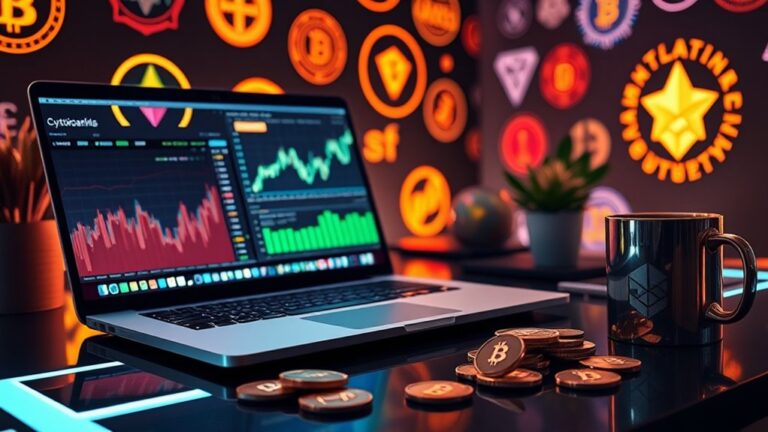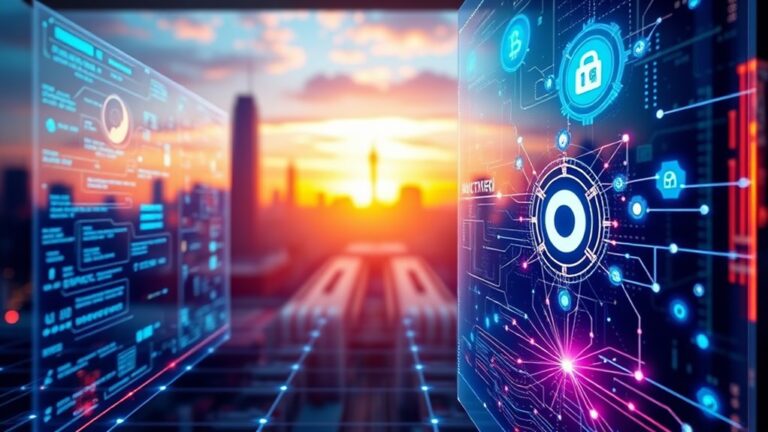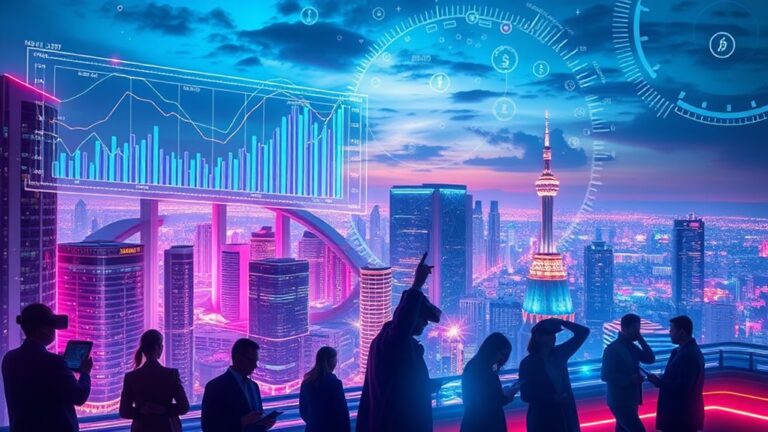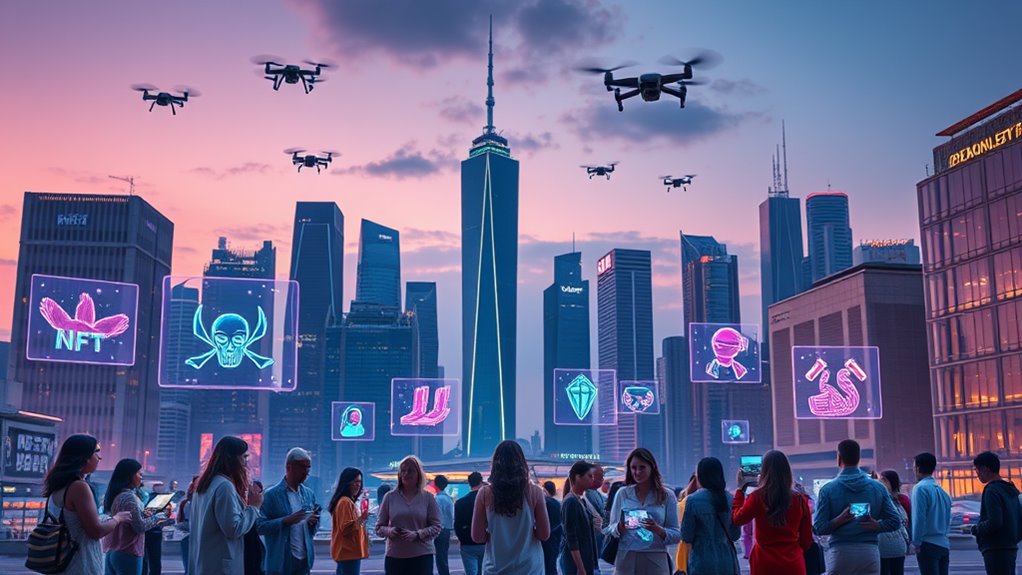
Future of NFTs Beyond Art: Unlocking New Trends
The future of NFTs extends beyond art into various sectors like gaming, music, and real estate. Utility NFTs provide ownership benefits and enhance transactions, while gaming innovations allow players to earn real income through play-to-earn models. In music, artists gain direct revenue by eliminating intermediaries. As industries adopt NFTs for practical uses, technological advancements, such as blockchain scalability and integration with AI, suggest promising growth and evolution in NFT markets. Further insights reveal emerging trends and applications.
Key Takeaways
- NFTs are expanding into real estate through tokenization, enabling fractional ownership and simplified transactions for properties.
- The supply chain industry is leveraging NFTs for enhanced transparency, tracking products from origin to consumer effectively.
- In fashion, brands like LVMH are using NFTs for product authentication, showcasing their utility beyond digital art.
- The gaming sector is adopting NFTs for play-to-earn models and interoperable assets, creating new revenue streams and community engagement.
- The music industry is seeing NFTs as a means for artists to earn direct revenue and guarantee royalties, enhancing fan interactions.
NFT Market Growth and Projections
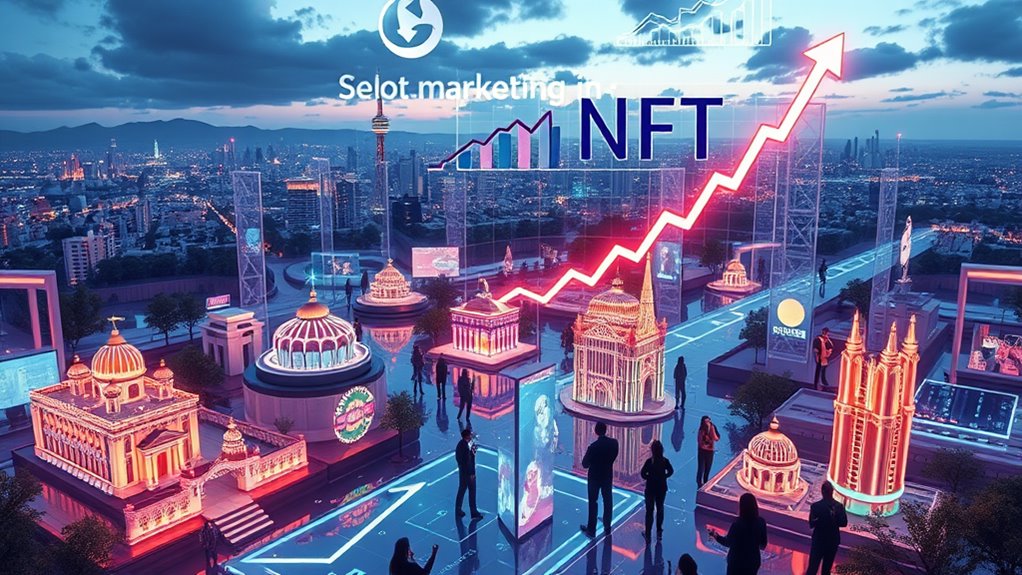
The NFT market is experiencing remarkable growth and transformation, with projections indicating substantial increases in market size over the coming years.
It is expected to grow from approximately $43 billion in 2024 to $61 billion in 2025, reflecting a noteworthy increase of about 41.6%. By 2029, the market is anticipated to reach $247 billion, showcasing robust expansion.
Factors driving this growth include the popularity of digital art and gaming NFTs, which are anticipated to generate considerable market volume.
The Asia-Pacific region is projected to contribute significantly, with a market share of around 37%.
As corporations increasingly adopt NFTs for promotional activities, the demand for digital assets continues to rise, shaping the future landscape of this evolving market.
The Rise of Utility NFTs
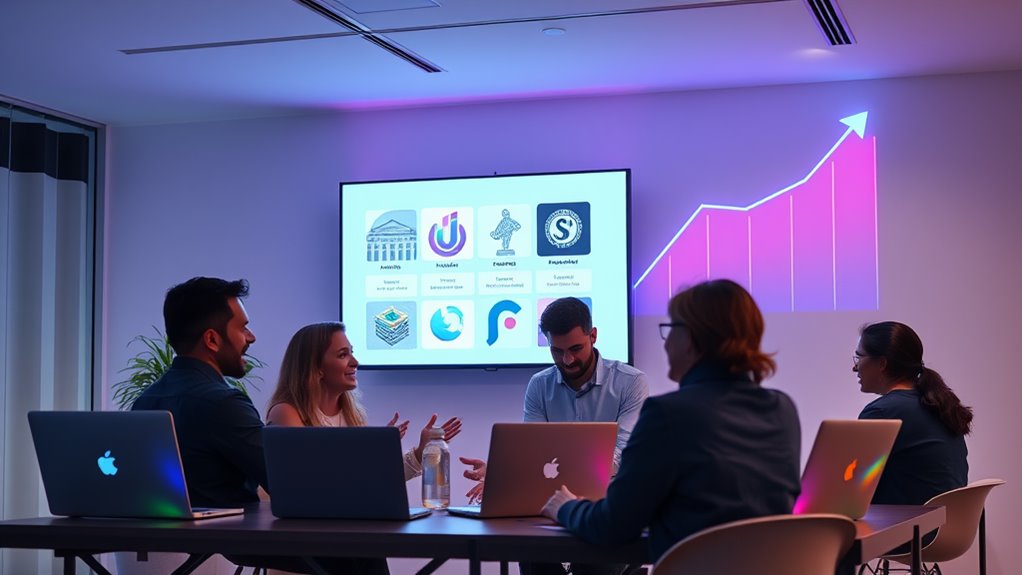
Utility NFTs represent a significant evolution in the non-fungible token landscape, moving beyond the domain of digital art to offer practical applications across various sectors.
Defined as tokens that provide ownership benefits like exclusive access or rewards, utility NFTs rely on blockchain technology and smart contracts. They extend NFT use into areas such as gaming, where players can own and trade in-game items, and fashion, where brands like LVMH utilize them for product authentication.
Additionally, utility NFTs enhance user engagement by offering tangible value and fostering loyalty in digital ecosystems. The rise of these NFTs indicates a trend toward integrating digital assets into real-world utilities, signifying a broader acceptance and innovation within the NFT space. As the demand for unique digital assets grows, utility NFTs are poised to redefine how we view ownership and engagement in the digital realm.
Real-World Applications of NFTs

The real-world applications of NFTs extend far beyond digital art, showcasing their potential in various sectors.
Tokenization of assets allows for fractional ownership and easier transactions in real estate, while NFTs can enhance supply chain transparency by tracking products from origin to consumer.
Additionally, innovations in event ticketing demonstrate how NFTs can provide secure access and unique experiences, illustrating their utility beyond mere ownership.
Tokenization of Assets
Tokenization of assets represents a considerable advancement in how various types of property and investments can be managed and traded. By dividing real estate into smaller, tradable fractions, investors can access opportunities with lower capital requirements, increasing market participation.
This process enhances liquidity, facilitating quicker transactions compared to traditional methods. Blockchain technology guarantees secure ownership records, markedly reducing fraud risks and improving transparency.
Similarly, collectibles, including sports cards and art, can be tokenized, providing verified ownership and combating counterfeiting. Furthermore, commodities can also be tokenized, allowing fractional investments and simplifying transactions.
Utility Beyond Ownership
As the digital landscape evolves, non-fungible tokens (NFTs) are emerging as versatile tools with applications that extend far beyond the sector of art and collectibles.
In the sphere of supply chains, NFTs enhance transparency by logging every step of a product’s journey, which helps verify authenticity and reduces fraud. Luxury brands use NFTs to certify product origins, ensuring customers receive ethically sourced items.
In gaming, NFTs provide players true ownership of in-game assets, facilitating trading across platforms and creating new revenue streams.
Moreover, in healthcare, NFTs secure sensitive patient records and streamline identity verification processes.
Real Estate Innovations
Innovations in real estate are increasingly being shaped by the integration of non-fungible tokens (NFTs), which offer a new approach to property transactions.
NFTs facilitate the tokenization of real estate, allowing properties to be represented as digital tokens on a blockchain. This enhances liquidity and provides global access, promoting fractional ownership and making investments more accessible.
Notable platforms like Propy and Lofty AI exemplify how NFTs streamline transactions, reduce costs, and guarantee secure ownership records through blockchain technology.
However, challenges remain, including the need for standardized legal frameworks and addressing tax implications.
Despite these hurdles, the potential for increased efficiency and expanded market access presents exciting opportunities for real estate professionals steering this evolving landscape.
Innovations in the Gaming Industry
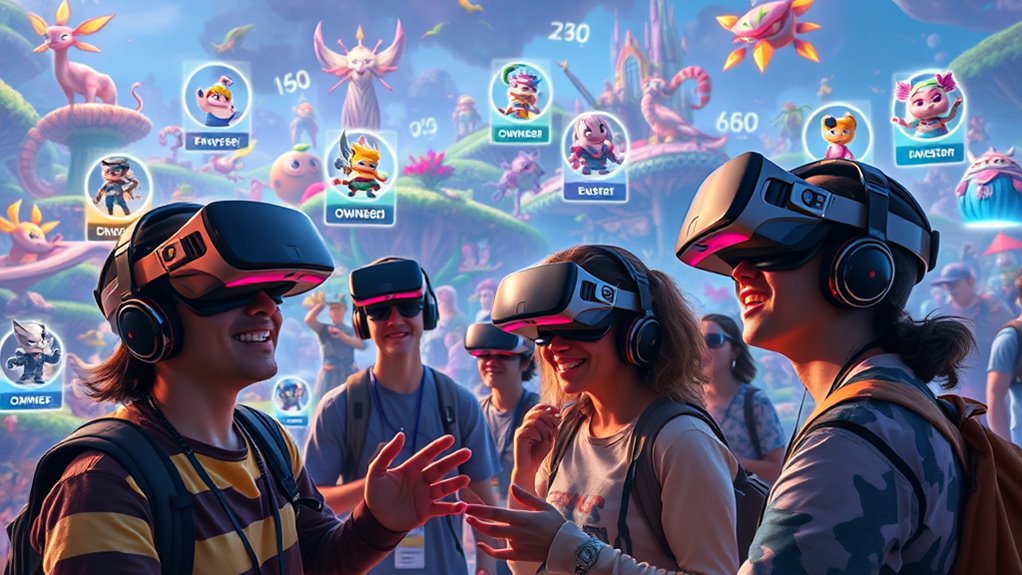
The gaming industry is experiencing significant innovations through the integration of NFTs, particularly with the rise of play-to-earn models that allow players to earn real-world income while gaming.
Interoperable gaming assets enhance the experience by enabling players to transfer items across different games, fostering a sense of ownership and creativity.
Additionally, these developments encourage community engagement, as players can form social connections based on shared digital assets and participate in collaborative activities. As blockchain gaming continues to evolve, it is expected to attract millions of players into the crypto ecosystem by providing new monetization opportunities and decentralized governance.
Play-to-Earn Revolution
While many traditional gaming models focus solely on entertainment, the play-to-earn (P2E) revolution introduces a transformative approach that allows players to earn real-world value through their in-game activities.
This model utilizes blockchain technology, creating decentralized economies where players can engage in various transactions.
- Players own tokenized assets, such as characters and land.
- Games provide diversified rewards, including digital collectibles and real-world merchandise.
- Global participation enables individuals from various backgrounds to earn income.
- Strong community engagement fosters competition and collaboration.
- Sustainable models aim to balance token supply and demand for economic stability.
Moreover, this innovative approach mirrors the principles of decentralized finance, offering users a more inclusive and efficient financial ecosystem.
Interoperable Gaming Assets
Interoperable gaming assets represent a significant advancement in the gaming industry, building upon the foundations laid by the play-to-earn revolution. These assets leverage blockchain standards like Ethereum’s ERC-721 and ERC-1155, facilitating secure ownership verification through smart contracts.
This innovation allows gaming assets to be portable, enabling players to use their avatars and items across multiple games. Additionally, interoperability fosters collaboration among developers, creating a more interconnected gaming environment.
As a result, players enjoy true ownership of in-game assets, leading to new revenue streams for developers through transactions and royalties. However, challenges such as standardization and compatibility must be addressed to guarantee a seamless experience.
Ultimately, interoperable gaming assets are transforming the gaming landscape, enhancing player engagement and economic opportunities.
Community Engagement Opportunities
Innovative community engagement models have emerged as a pivotal aspect of the gaming industry, particularly through the integration of non-fungible tokens (NFTs).
These models not only enhance player involvement but also redefine traditional gaming dynamics.
- Community Influence: Players can use NFT tokens to vote on game development decisions.
- Co-Creation Opportunities: Players contribute to designing in-game assets via NFT platforms.
- Decentralized Governance: Game ecosystems can be managed by players through Decentralized Autonomous Organizations (DAOs).
- Exclusive Benefits: Specific NFTs may grant access to unique community events and activities.
- Social Interactions: Shared ownership and trading of NFTs foster connections among players.
These innovations not only elevate player engagement but also create a sense of ownership and community within the gaming landscape.
Transforming the Music Industry With NFTS
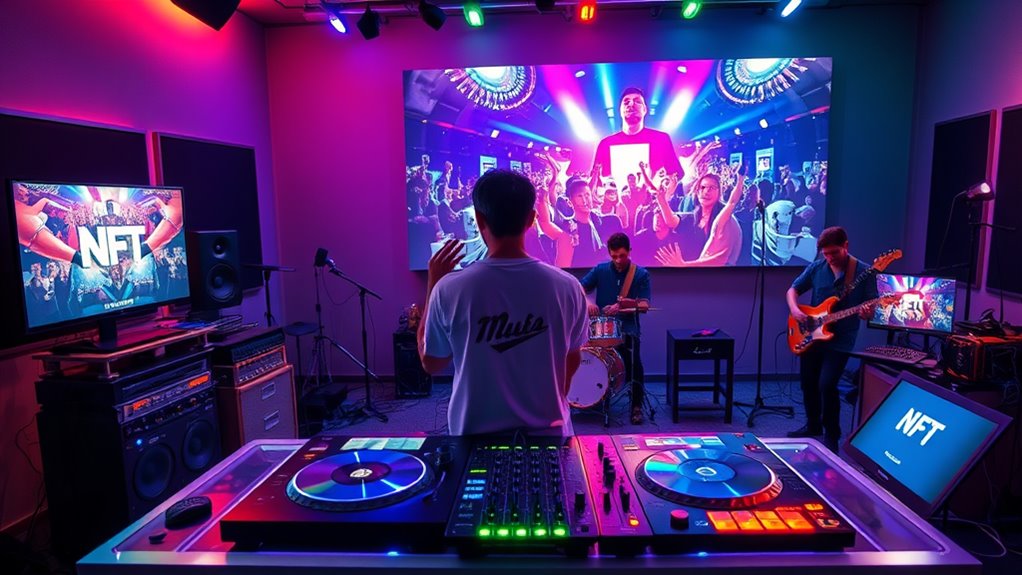
The emergence of NFTs is reshaping the music industry by providing artists with new ways to monetize their work and engage with fans.
In 2023, music NFT sales surpassed $200 million, marking a 150% increase from the previous year. This growth allows artists to earn direct revenue from music sales, eliminating traditional intermediaries.
NFTs also guarantee that artists receive royalties from both primary and secondary sales, creating a steady income stream. In addition, artists can offer exclusive content, such as bonus tracks and virtual concert access, enhancing fan engagement.
The Emergence of Hybrid NFTs
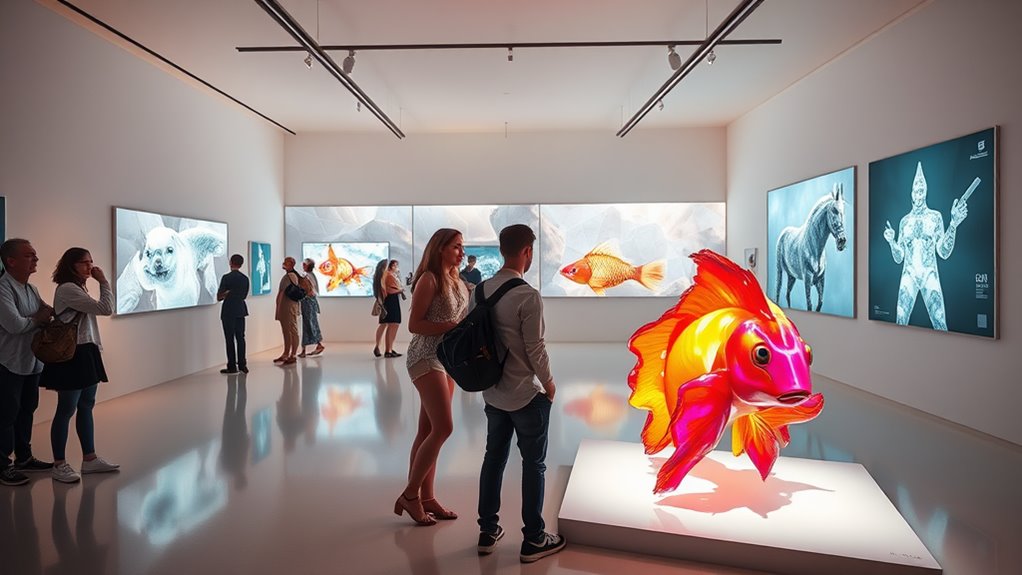
As the digital landscape evolves, hybrid NFTs are emerging as a significant advancement in the blockchain space. These tokens blend the characteristics of fungible and non-fungible tokens, creating a versatile asset that enhances market liquidity and accessibility.
- Hybrid NFTs can switch between ERC-20 and ERC-721 standards.
- They allow fractional ownership, making participation easier for users.
- The ERC 404 standard enables fungible-to-NFT shifts based on context.
- Hybrid models like HybridX enhance integration with DeFi platforms.
- Interoperability across blockchains fosters collaboration and user engagement.
This innovative approach promises to reshape the NFT landscape, offering new possibilities for customization and experience while addressing transaction costs and market challenges.
Hybrid NFTs represent a vital step toward broader adoption in various industries.
Integrating Physical Assets With Digital Ownership

Integrating physical assets with digital ownership represents a significant evolution in how individuals and businesses interact with tangible items in a digital context.
Tokenization allows non-fungible tokens (NFTs) to represent ownership of real-world assets, such as real estate and luxury goods, enhancing accessibility and security.
Fractional ownership models enable multiple investors to own parts of high-value assets, increasing market reach and liquidity.
Additionally, embedding NFC tags in physical items linked to NFTs guarantees authenticity and ownership verification, reducing counterfeiting risks.
This integration fosters transparency in supply chain management, allowing consumers to track product origins.
Technological Advancements in the NFT Space
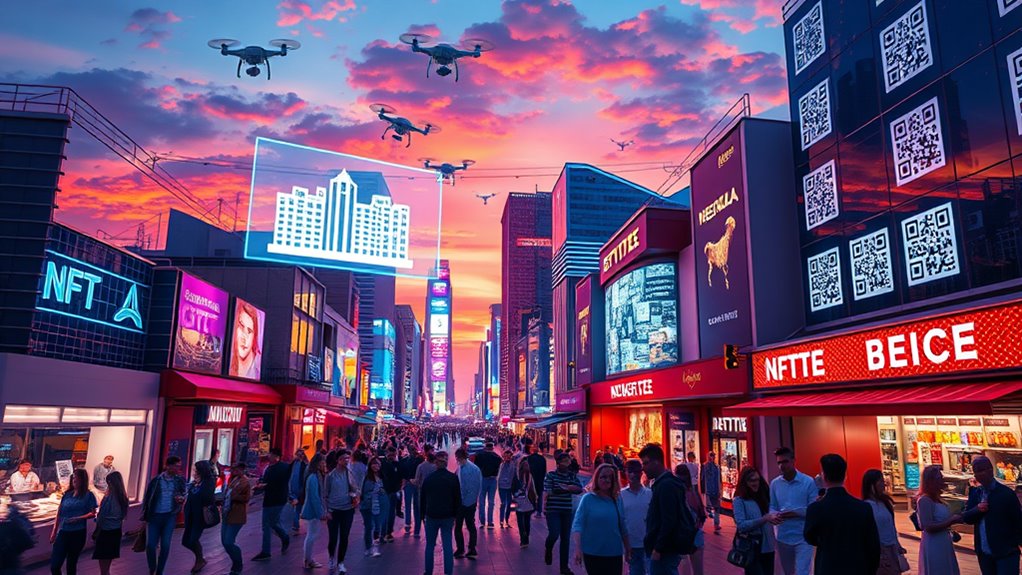
Technological advancements in the NFT space are reshaping how digital assets are created, traded, and utilized across various industries. These innovations are fostering new opportunities and enhancing the functionality of NFTs.
- More efficient blockchain infrastructures, like Ethereum’s proof-of-stake, lessen costs and environmental impact.
- New networks such as Solana and Polygon improve NFT scalability and efficiency.
- Cross-chain functionality allows NFTs to operate on multiple blockchains, increasing accessibility.
- The integration of DeFi elements with NFTs creates dynamic ecosystems.
- Emerging technologies, including AR and AI, enhance user experiences and enable interactive NFTs.
- Additionally, the implementation of Layer 2 scaling solutions is expected to significantly improve transaction speeds and reduce costs associated with NFT trading.
These advancements are essential for the continued evolution of NFTs, impacting sectors such as gaming, ticketing, and supply chain management.
AI and Security in NFT Transactions
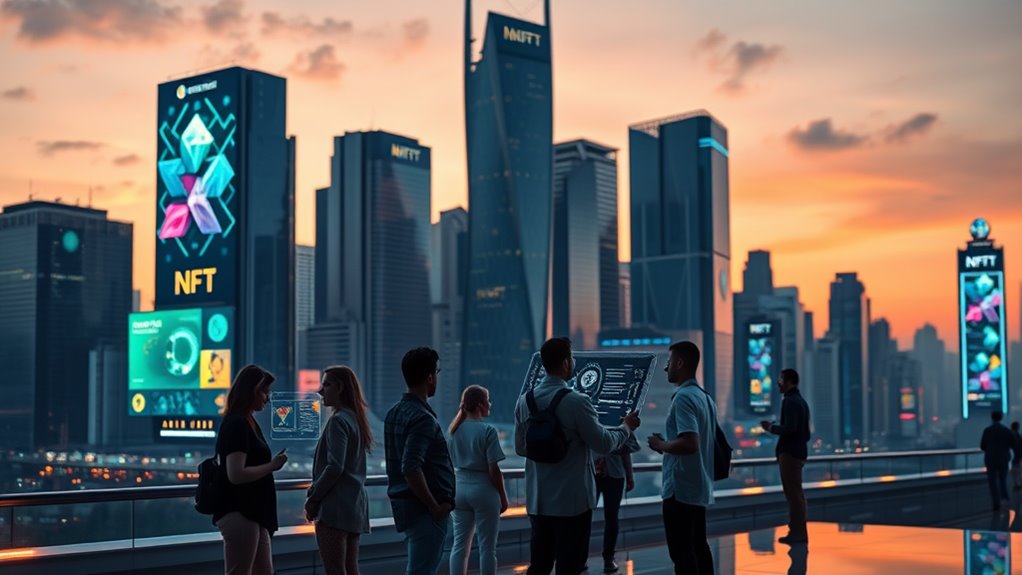
With the rise of NFTs, ensuring the security of transactions has become increasingly important, leading to the integration of artificial intelligence (AI) in this space. AI technologies enhance the verification process, providing real-time assessments of authenticity and preventing fraud. For instance, AGII’s AI system analyzes data patterns to protect creators’ intellectual property.
| AI Functionality | Impact on NFT Security |
|---|---|
| Verification of Authenticity | Enhances trust in transactions |
| Anomaly Detection | Prevents scams like wash trading |
| Blockchain Integration | Offers a tamper-resistant transaction platform |
These advancements promote transparency and reduce the risk of investing in counterfeit digital assets, contributing to a more secure NFT market environment.
Future Investment Opportunities in NFTs

The future of investment opportunities in NFTs appears promising as various sectors begin to adopt this technology.
Tokenization of real assets, including real estate and commodities, allows for fractional ownership, making high-value investments more accessible to a broader audience.
Additionally, the integration of NFTs in gaming and music creates unique utility, offering new ways for creators and players to engage with digital assets while generating revenue streams.
Tokenization of Real Assets
As the landscape of investment evolves, the tokenization of real assets presents significant opportunities for both investors and asset owners. This process allows real-world assets, such as real estate and art, to be converted into digital tokens on a blockchain, enhancing liquidity and enabling fractional ownership.
Key benefits of this trend include:
- Increased accessibility for smaller investors through fractional ownership.
- Simplified cross-border transactions, reducing regional risks.
- Enhanced market liquidity and reduced transaction costs for asset owners.
- The potential for the real estate tokenization market to reach $1 trillion by 2025.
- Greater regulatory clarity, fostering a secure environment for investment.
Utility NFTs Expansion
Utility NFTs are emerging as a significant evolution in the digital asset landscape, offering practical applications that extend beyond the domain of traditional art and collectibles.
The rapid growth of the NFT market, from $200 million in 2020 to over $12 billion by early 2022, highlights the vast potential of utility NFTs. These digital assets provide real-world benefits, such as access to exclusive events, verification of authenticity in fashion, and educational credentials.
Industries are increasingly adopting utility NFTs to enhance user experiences and create new monetization avenues. As the metaverse expands, utility NFTs will likely play an essential role in digital property ownership and governance, further solidifying their position as valuable investment opportunities in the evolving NFT landscape.
Gaming and Music Integration
Gaming and music are at the forefront of innovation within the NFT landscape, presenting promising investment opportunities for both creators and investors. The integration of NFTs in these sectors is creating new avenues for monetization and engagement.
- NFT gaming is projected to grow considerably, driven by blockchain adoption and play-to-earn models.
- Musicians can monetize unique tracks and exclusive content through NFTs, enhancing revenue streams.
- Companies like Sky Mavis are leading the NFT gaming market with popular titles.
- NFT ownership fosters deeper connections between artists and fans, building community.
- Investment opportunities are emerging as the market sees considerable mergers and acquisitions, reaching around $300 million in 2022.
These trends highlight the evolving potential of NFTs in gaming and music.
Frequently Asked Questions
How Do NFTS Impact Environmental Sustainability and Energy Consumption?
NFTs greatly influence environmental sustainability and energy consumption, contributing to greenhouse gas emissions, particularly before shifting to proof of stake. Their energy demands resemble physical items, necessitating sustainable practices and renewable energy integration for future viability.
What Legal Challenges Do NFTS Face in Different Jurisdictions?
The labyrinth of legal challenges surrounding NFTs mirrors an intricate tapestry, woven with jurisdictional disputes, intellectual property ambiguities, and regulatory uncertainties. These complexities hinder enforcement, revealing a landscape fraught with potential pitfalls for creators and buyers alike.
How Can Individuals Create Their Own NFTS Easily?
Individuals can easily create their own NFTs by using user-friendly platforms like OpenSea or Rarible, which offer no-code solutions. These platforms simplify the minting process, enabling users to upload and sell digital assets effortlessly.
What Are the Tax Implications of Buying and Selling NFTS?
Steering through the NFT landscape resembles walking a tightrope; one misstep can lead to tax implications. Buying and selling NFTs triggers capital gains taxes, with meticulous record-keeping essential to avoid penalties and guarantee compliance with IRS regulations.
How Do Trends in NFTS Influence Traditional Investment Strategies?
Trends in NFTs considerably influence traditional investment strategies by introducing diversification options. Investors recognize NFTs’ unique market dynamics, which can reduce volatility and enhance portfolio performance, despite the need for understanding inherent risks and regulatory challenges.
Conclusion
As the NFT landscape evolves, it symbolizes a bridge connecting digital and physical domains. This connection opens doors to innovative applications across various industries, from gaming to music. As technology advances, NFTs will likely transform how ownership and value are perceived, much like a key unfastening new opportunities. By understanding these trends, individuals and businesses can navigate the future of NFTs, fostering growth and investment in a space that is continually redefining itself.

